

Anthony Crawford
1990 Lamborghini Countach review
6 Days Ago
Subaru has tweaked its strong-selling Forester SUV for 2022, with a new look and extra technology. Has it messed with a winning formula?
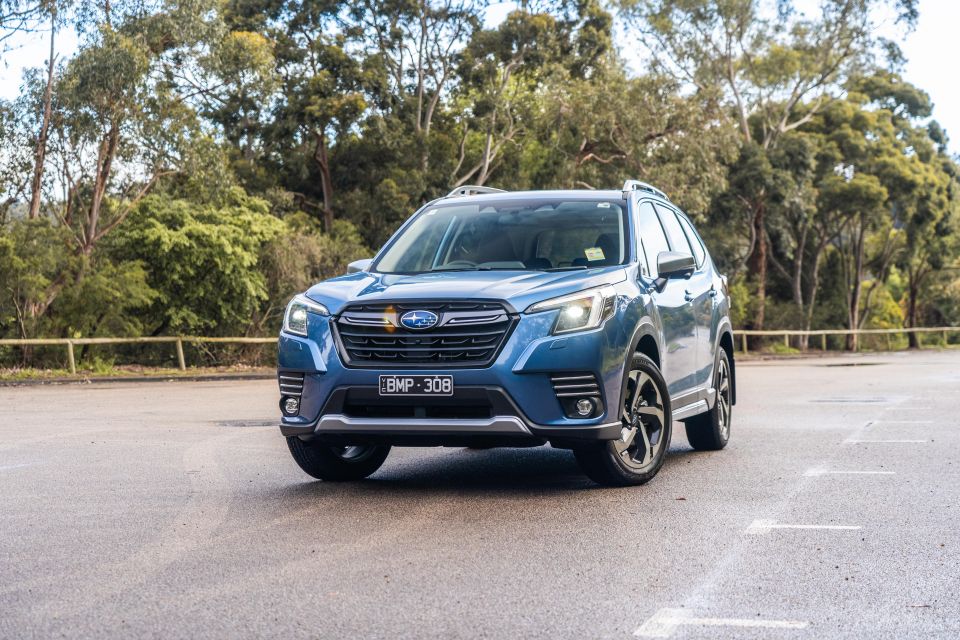
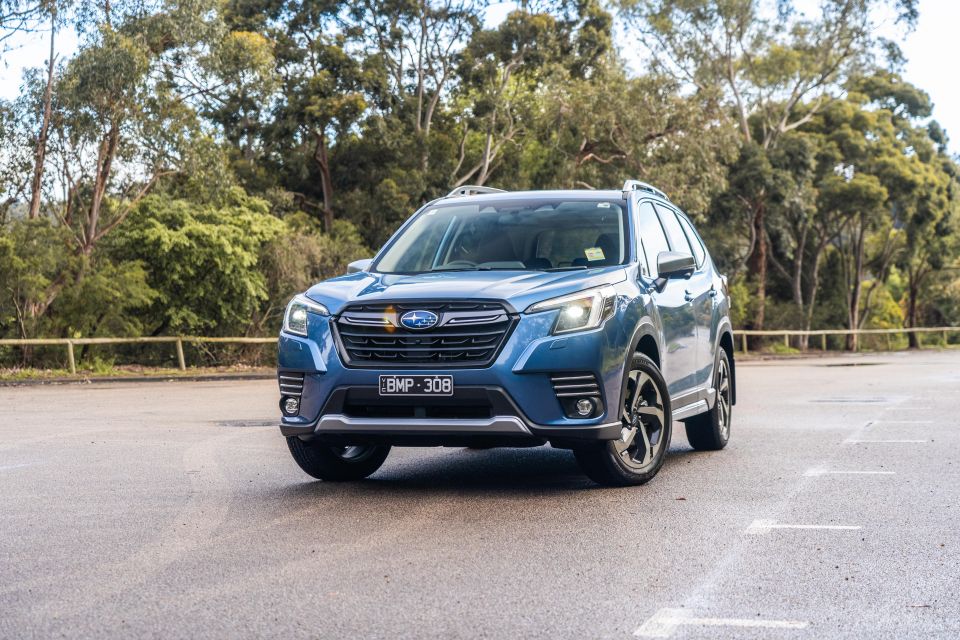

Contributor
New from
$35,190
excl. on-roads

Contributor
New from
$35,190
excl. on-roads


Contributor
New from
$35,190
excl. on-roads

Contributor
New from
$35,190
excl. on-roads
Quickly see how this car stacks up against its competition. Select any benchmark to see more details.
Where expert car reviews meet expert car buying – CarExpert gives you trusted advice, personalised service and real savings on your next new car.
Blink and you’ll miss it, but there’s a new Subaru Forester.
Revealed late last year, the 2022 Subaru Forester facelift builds on the foundations laid down by its predecessor with a range of detail tweaks designed to make it a slightly sharper-looking, safer way to haul your family around.
What’s changed? There are new headlights, bumpers, and wheel designs, and the suite of EyeSight driver assists has expanded to include lane-centring, lane-departure prevention, and autonomous emergency steering.
Oh, and there’s a redesigned instrument panel inside, along with gesture control for the air conditioning.
Subaru has fiddled with more than just the standard equipment list, though. Under the skin, it says the front coil springs and dampers have been retuned to improve both ride comfort and handling, and there’s new aluminium engine mounts to cut down on vibrations in the cabin.
It isn’t exactly a groundbreaking makeover, but that isn’t necessarily a bad thing. After all, the Forester is the best-selling Subaru in Australia ahead of the Outback, and has outsold the Hyundai Tucson and Kia Sportage to date in 2021.
Is this a successful tweak to a winning formula, or has Subaru fiddled with the wrong ingredients?

The 2022 Subaru Forester 2.5i-S on test here is priced from $44,190 before on-road costs, up $700 on the pre-update car. According to the Subaru Australia website, that equates to just north of $49,000 drive-away.
It’s the best-equipped Forester you can buy, but it’s not the most expensive. That honour belongs to the Forester Hybrid S, which is $3000 pricier.
2022 Subaru Forester pricing:
All prices exclude on-road costs.
At $44,190 before on-roads, the Forester S goes head-to-head with the Toyota RAV4 Cruiser Hybrid ($43,415 before on-roads) and Mitsubishi Outlander Aspire AWD ($43,990 before on-roads), along with the Mazda CX-5 Touring 2.2D ($44,280 before on-roads) and Hyundai Tucson Elite N Line 1.6T petrol ($45,000 before on-roads).
It also takes on the Nissan X-Trail Ti AWD 2.5L ($46,115 before on-roads) and Honda CR-V VTi LX AWD ($53,200 drive-away).
Although there are more powerful and more efficient SUV options out there, it’s tough to argue the range-topping Forester represents anything but good value when you consider how much standard equipment it gets.
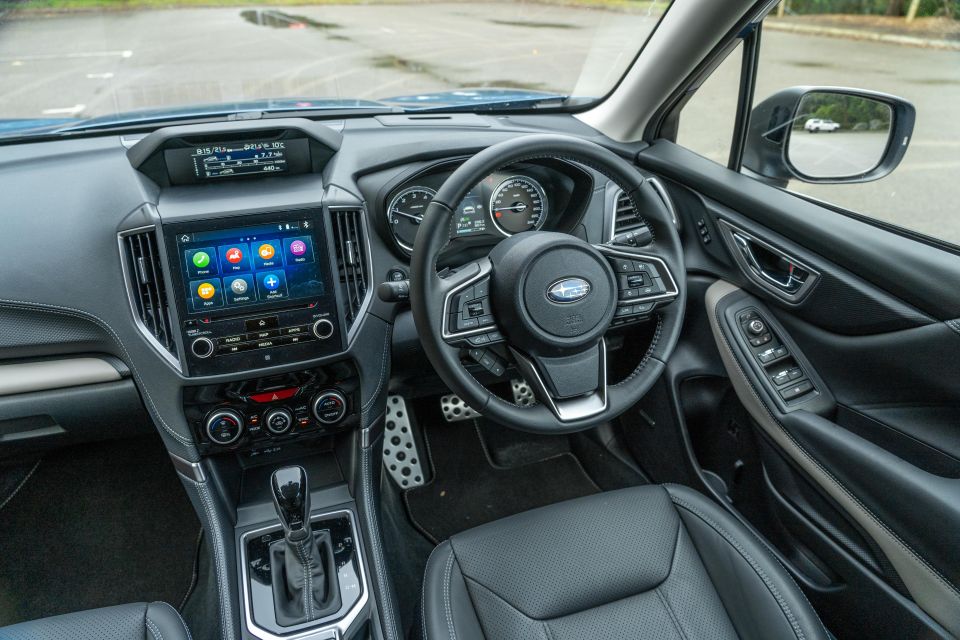
Unique equipment on the Forester 2.5i-S is limited to leather seat trim with grey highlights and an eight-speaker Harman Kardon sound system.
That’s atop the following, which is standard on lower models:
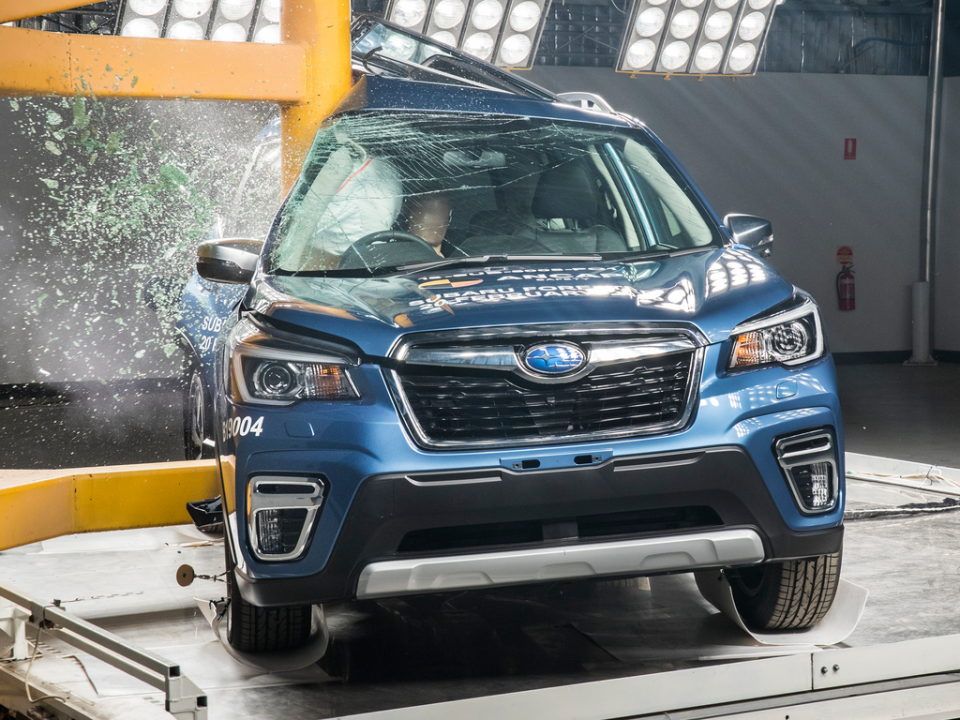
ANCAP awarded the Subaru Forester five stars in 2019 based on scores of 94 per cent for adult occupant protection, 86 per cent for child occupant protection, 80 per cent for vulnerable road user protection, and 78 per cent for safety assist functions.
All 2022 Subaru Forester models come standard with:
All bar the base 2.5i come standard with a facial recognition camera to detect driver drowsiness or distraction, as well as autonomous emergency braking in reverse.
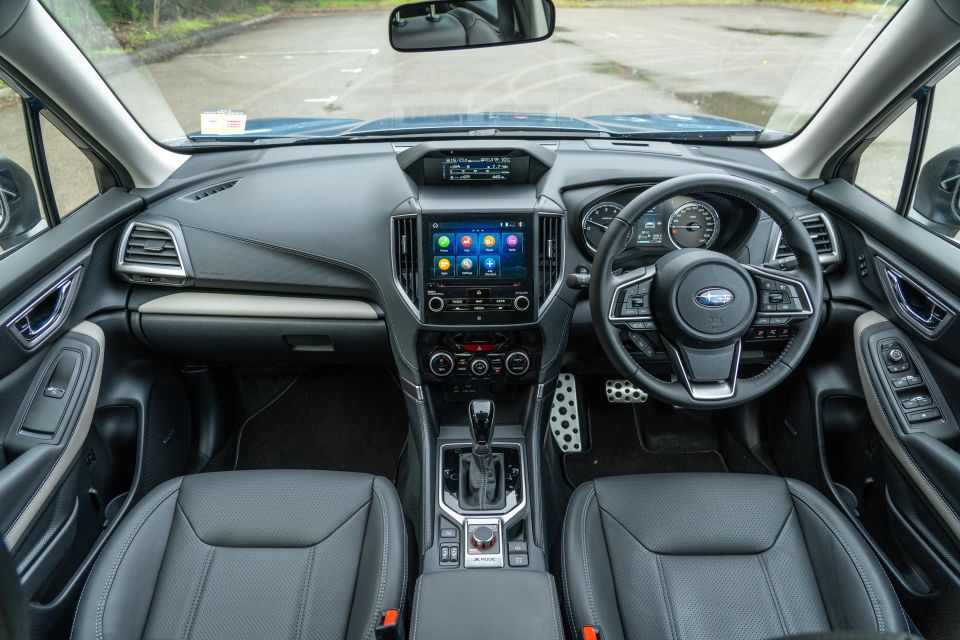
The Forester doesn’t deviate far from the Subaru formula up front. There’s lots of screens, lots of buttons, and solid materials – although the new Outback has an even higher-tech, cleaner centre stack.
The seats are trimmed in what feels like high-quality leather, and neatly balance pillowy softness with support. With heating and electric adjustment, you couldn’t ask for much more… except we’re greedy, so we’d like to see under-thigh extensions to better cater for long-legged drivers.
Facing the driver is a chunky, leather-trimmed steering wheel featuring an eye-popping array of buttons. There are 17 on the wheel alone, and that doesn’t include the plastic paddle shifters. Bundle in controls for the active safety down by the driver’s right knee, as well as a trip reset button behind the wheel, and there’s a bit going on.
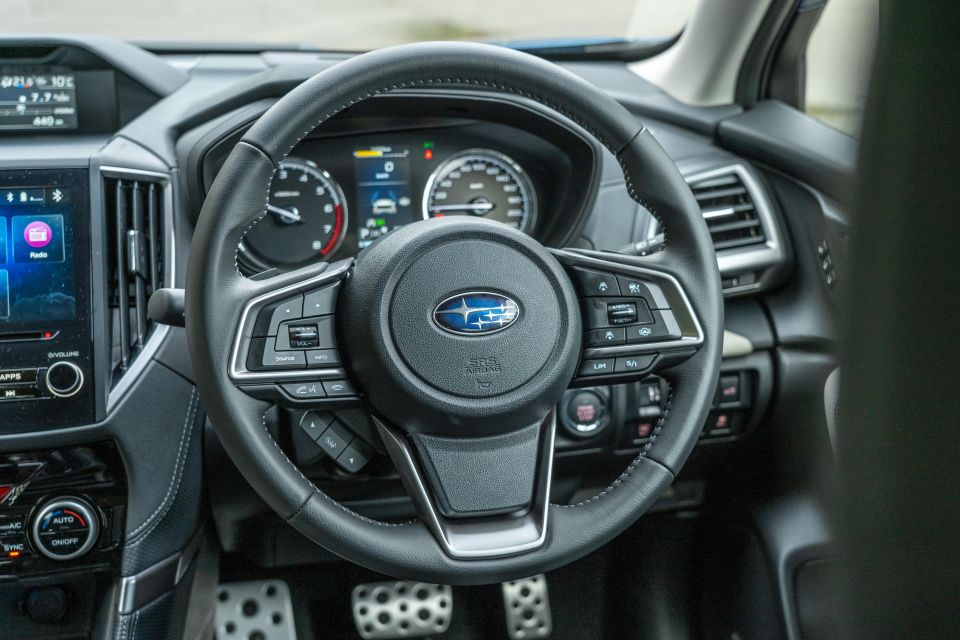
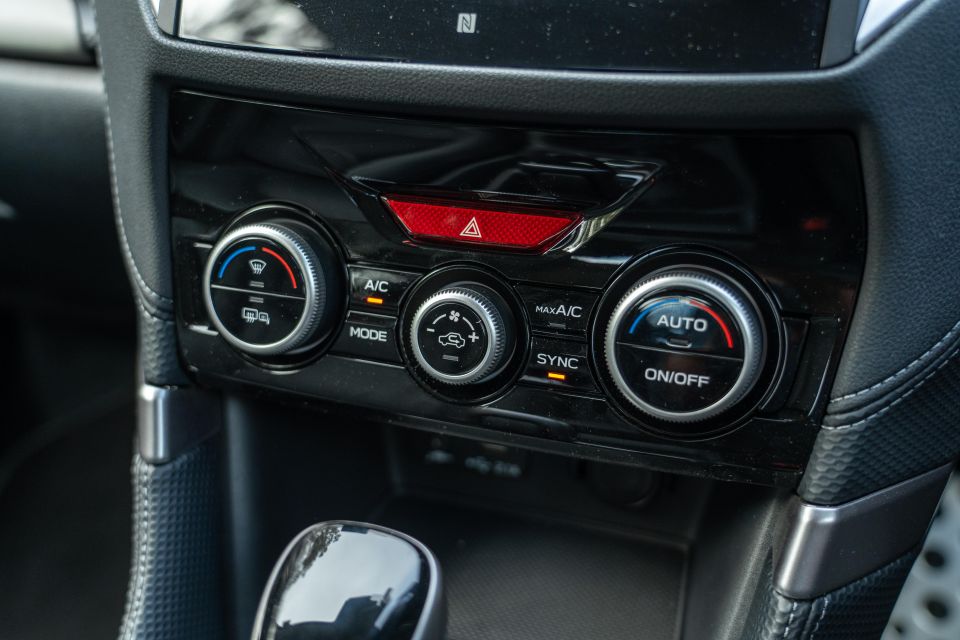
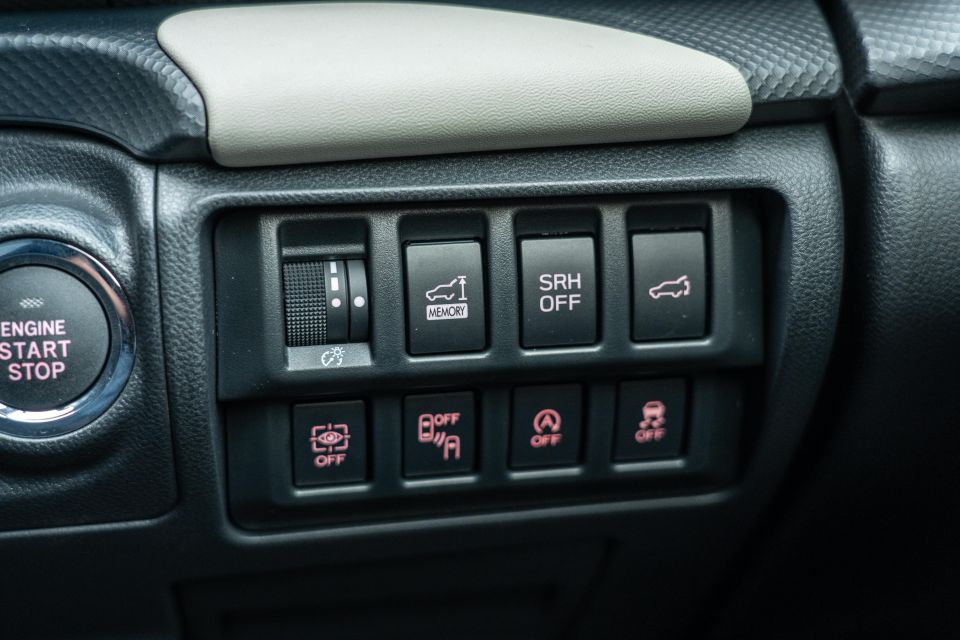
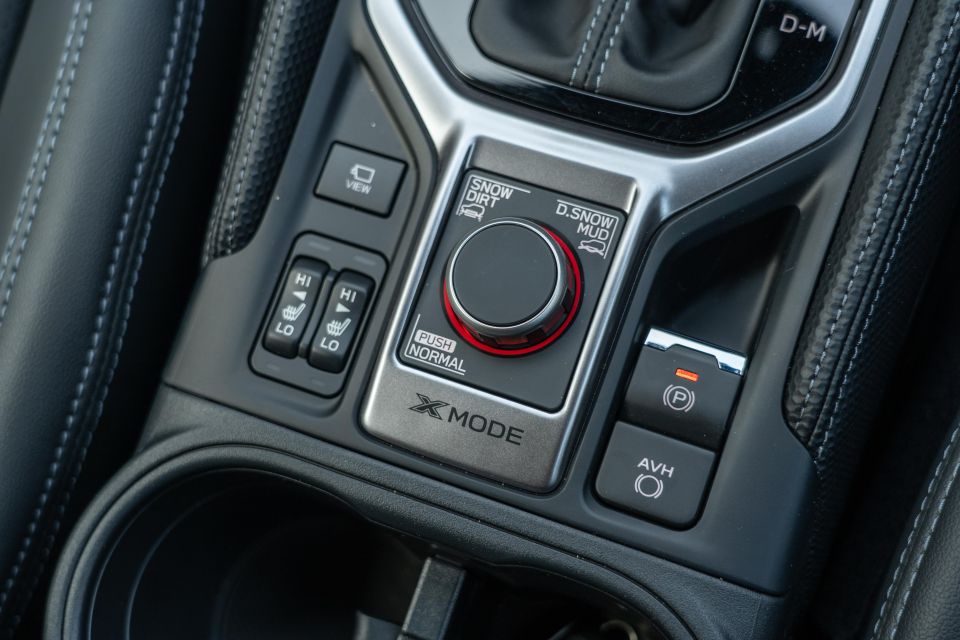
Thankfully they’re all backlit and clearly labelled, and they’re all proper buttons instead of fiddly touch controls. With time comes familiarity, of course.
The clear analogue dials flank a 4.2-inch trip computer with a huge range of layouts, including a digital speedo.
It partners a horizontal display atop the dashboard, capable of showing fuel economy, media information, a breakdown of your active safety systems, or details about your all-wheel drive system.
They’re both useful displays, but both have their quirks. You lose your dash-top display in favour of an EyeSight graphic when cruise control in engaged, for example, and unless you’re very particular with how you set the three screens up it’s easy to just have the same information on show in three different places.
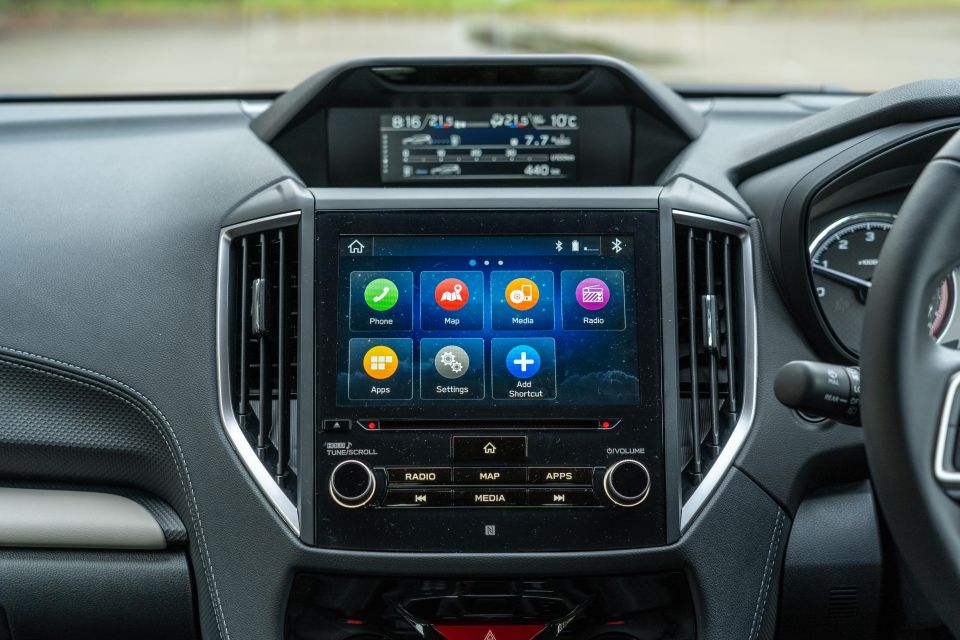
Finally, the infotainment system is perfectly functional. Wireless smartphone mirroring would be nice, given it’s rolling out in the Forester’s rivals, but you still get wired Apple CarPlay and Android Auto, and the factory system blends a logical layout with bright, crisp graphics.
It also has factory mapping. The shortcut buttons and volume/tuning dials below the screen are both welcome in a world that’s going touch-only, but the taller screen in the new Outback wagon makes the dashboard in the Forester look a bit old.
Like the Outback, the Forester has a facial recognition system. It can remember up to five drivers, and automatically moves the seats and configures the infotainment system when it works out who’s behind the wheel. It also chimes when you take your eyes off the road, which sounds good in theory but tends to jump at shadows in practice.
Storage spaces abound up front. There’s a wallet-sized space below the dashboard, two cupholders, a shelf for garage keys, and a deep bin beneath the central armrest. You also get two USB-A ports up front.
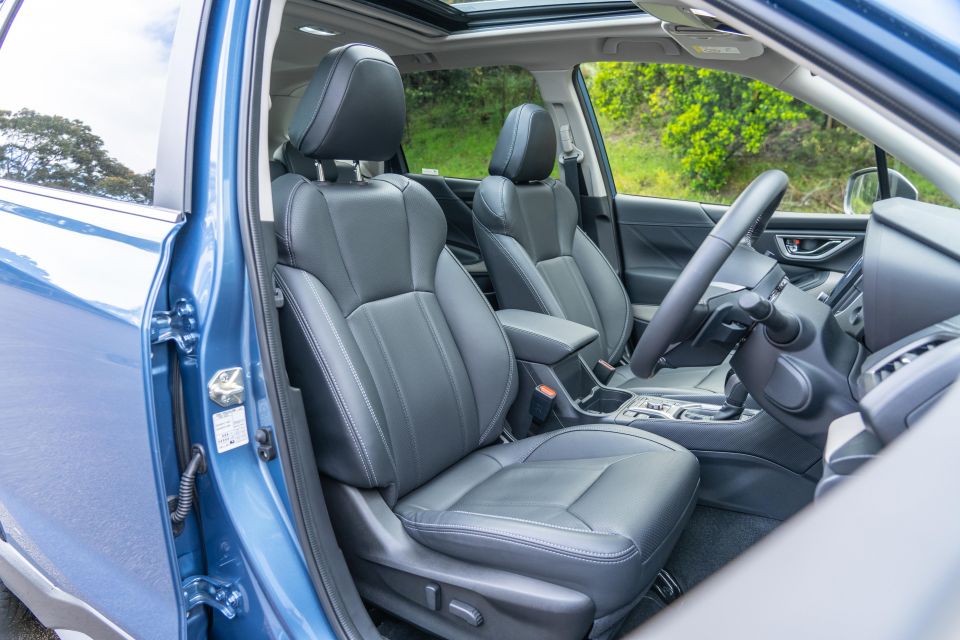
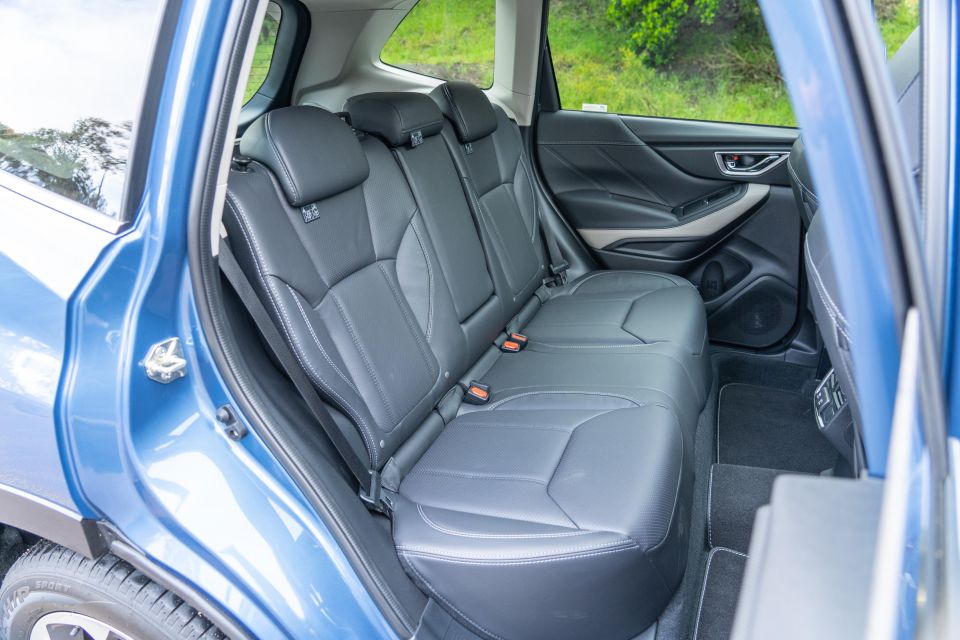
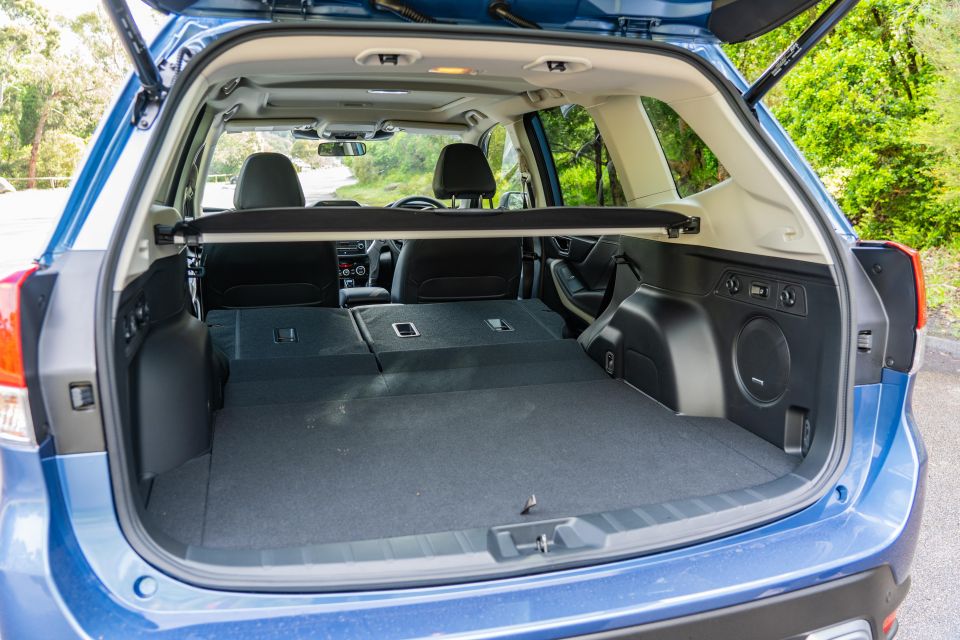
The rear seats were a strong point when this Forester generation launched, and time hasn’t changed that. With a tall, boxy roofline and massive windows, it feels much brighter back there than in some of its more style-focused rivals.
Even with a panoramic sunroof fitted the Forester has enough headroom for tall teens, and legroom is good behind taller adults. The bench itself is plush, and is wide enough for three people to sit across without too much trouble.
You get air vents, two USB ports, a fold-down armrest, and two-tiered pockets behind the front seats, along with door pockets that comfortably swallow a water bottle. Speaking of the rear doors, the fact they open to almost 90 degrees makes it easier to load a child seat into the Forester than some of its rivals.
Boot space is 498L with the second row in place, expanding to 1740L with the rear seats folded flat. The low, flat boot floor makes it easy to load bulky or cumbersome items back there, and the boxy body makes fitting big bikes easy.
There’s a full-sized spare wheel under the floor, rather than a space saver or puncture repair kit.
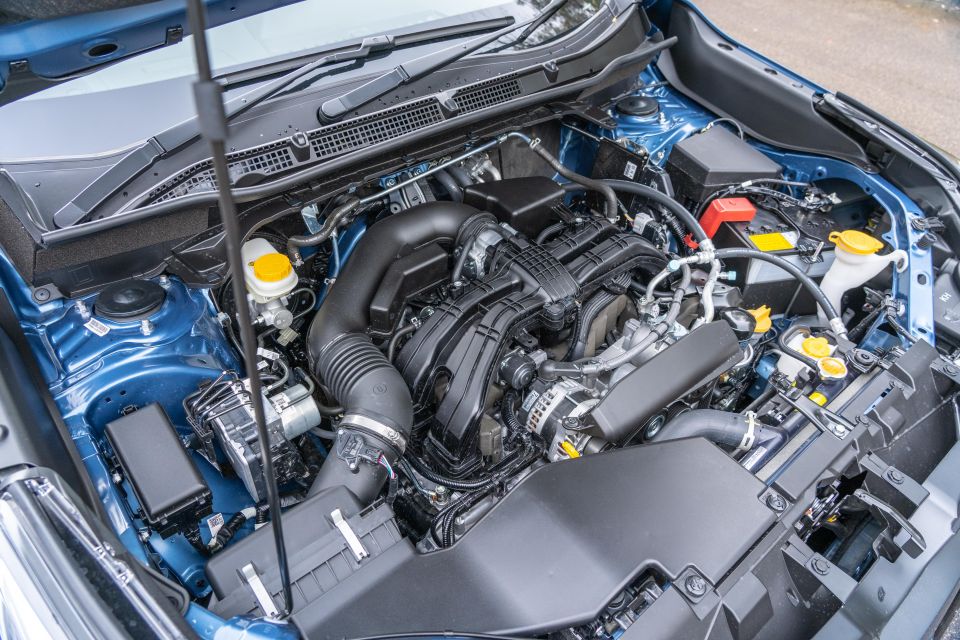
Power in the 2022 Subaru Forester comes from a 2.5-litre naturally-aspirated petrol four-cylinder ‘boxer’ engine. It makes 136kW of power and 239Nm of torque, and is mated exclusively to a continuously-variable transmission and all-wheel drive.
A hybrid is also offered, powered by the combination of a smaller 100kW/196Nm 2.0-litre four-cylinder engine with a 12kW/66Nm electric motor, a lithium-ion battery pack, and a CVT transmission.
Claimed fuel economy is 7.4L/100km on the combined cycle, and all Foresters run on 91 RON regular unleaded fuel. Petrol models have a 63L fuel tank while the hybrid has a 48L tank.
We saw 7.3L/100km on a sustained highway run, and around the 8.0L/100km mark in the city.
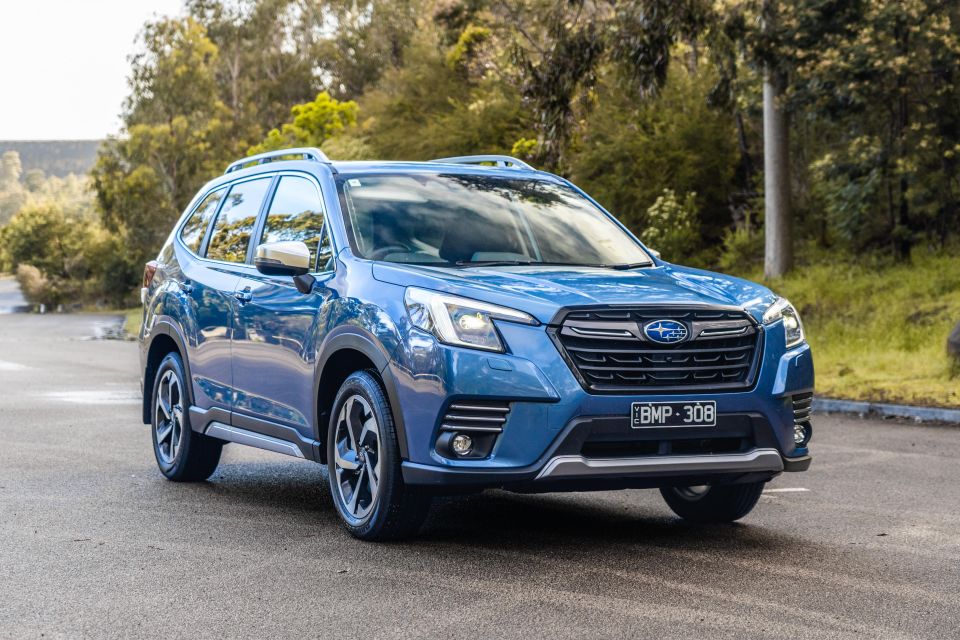
Subaru says it’s made changes to the suspension in the Forester, but the 2022 model feels almost identical to its predecessor from behind the wheel. It’s rock solid, but light on for excitement.
The brand deserves praise for standing by its boxer configuration, but the Forester’s engine doesn’t have the same offbeat, wobbly character as its predecessors. It’s smooth and quiet at idle, and barely raises its voice when cruising in the city.
According to Subaru, the updated car has new engine mounts designed to cut vibrations in the cabin. The pre-update wasn’t badly behaved, so it’s hard to confidently say how much of a difference the changes have made, but you can’t question refinement at a standstill.

Unfortunately, the engine needs to be worked hard if you’re to get anywhere in a hurry, and the CVT means working it hard isn’t particularly pleasant. Although it pretends to shuffle through gears on light throttle, the CVT holds revs around the 4000rpm mark when you demand more performance, backed by a dull drone from the engine.
It’s fine for cruising around the city, but when loaded with bags and people at highway speeds there’s no doubt the Forester would benefit from a turbocharged engine with more mid-range torque. Subaru, please bring back the XT.
The steering is perfectly in keeping with other modern Subaru models; it’s reasonably direct off-centre, and requires a bit more muscle at low speeds than is the case in some of its rivals. Of course, it’s light enough for anyone to park without breaking a sweat, and a kerb-side camera (paired with the reversing camera) makes avoiding gutters a breeze.
The ride is a bit firmer than you might expect, given the boxy body doesn’t scream sporty, but the Forester still does a good job softening nasty city bumps and potholes. The firm-ish tune pays off on the highway, where the big Subaru is able to deal with dips and crests in one clean movement, settling down quickly rather than wobbling around.
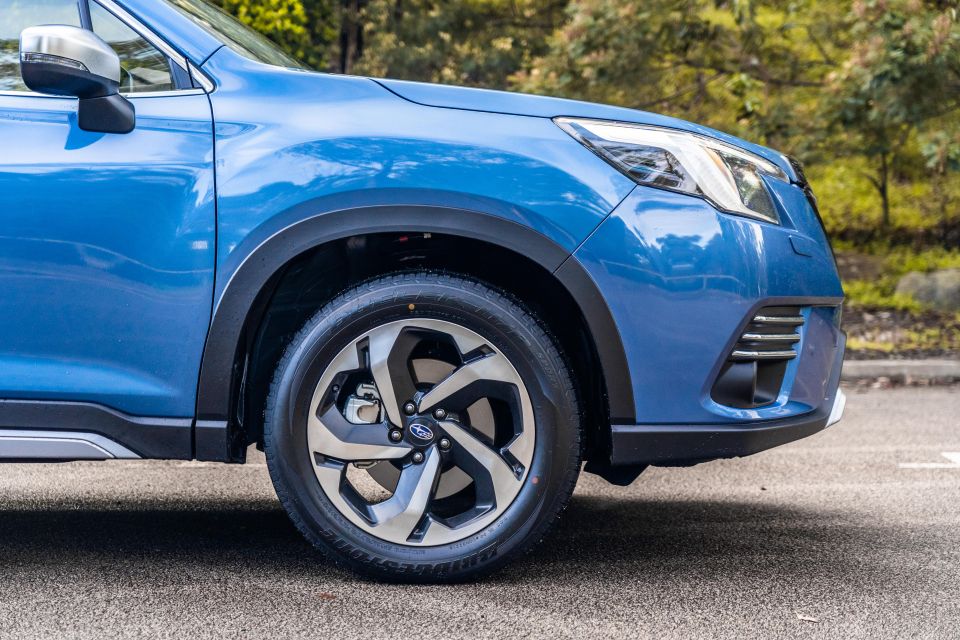
Wind and road noise are well suppressed on Australia’s typically poor country highways, provided you’re not asking too much of the engine.
Subaru was early to the active driver assist party with EyeSight, its stereo camera-based safety suite. That experience shows in the Forester, which has one of the smoothest and smartest adaptive cruise control systems you’ll find in a mainstream car.
New for 2022 is an active steering system designed to actively keep you between the white lines on the highway, rather than sitting dormant until you drift towards the edge of the lane. It’s activated with a button on the steering wheel, and defaults to on when you start the car.
No doubt it’s handy on super long highway drives, but it was a bit too hands-on for my liking on shorter trips. It also likes to hug the right-hand side of the lane, and will fight the driver if they try to move closer to the centre.
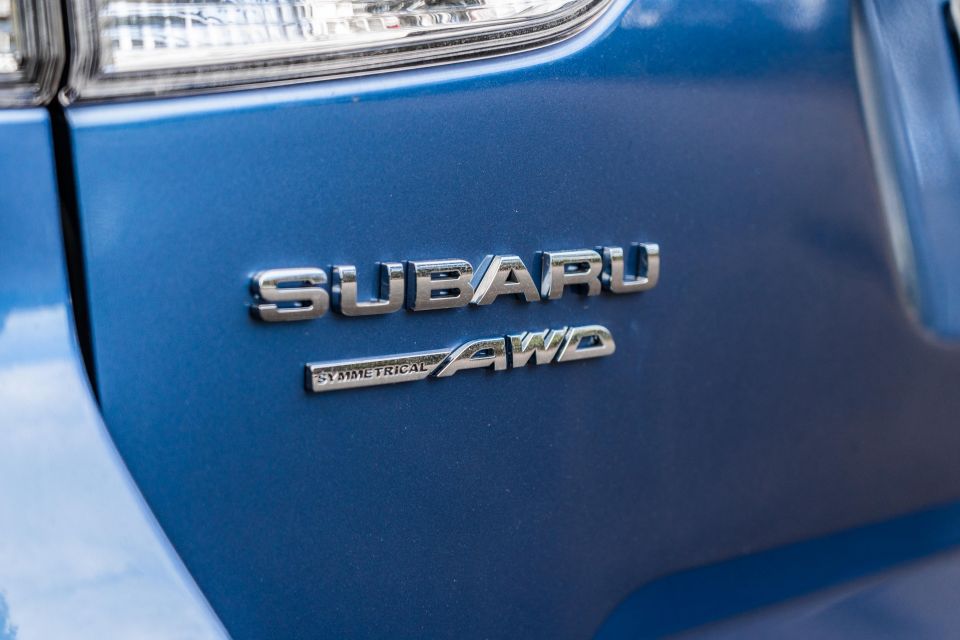
The 2022 Forester has a five-year, unlimited-kilometre warranty, and Subaru offers three- or five-year servicing plans.
For the non-hybrid models, these cost $1269.15 and $2413.63 respectively, while the Hybrid’s plans cost $1279.49 and $2430.85.

Where expert car reviews meet expert car buying – CarExpert gives you trusted advice, personalised service and real savings on your next new car.
If it’s not clear by now, the 2022 Subaru Forester is a very mild update to what was already a solid, practical family SUV.
It’s hard to discern much change to the way it drives, which means it’s still comfortable and quiet, with the all-wheel drive security Subaru buyers expect.
There aren’t many better mid-sized SUVs if you’re constantly loading kids into child seats or need to carry a growing family, and the 2.5i-S comes loaded with (almost) all the luxuries you’d expect of a crossover priced just short of $50,000 on the road.
Some typically Subaru drawbacks remain. The engine isn’t particularly powerful, nor is it particularly efficient, and some of the active driver assists are good ideas in need of some refining. It’s also strange Subaru hasn’t included a wireless phone charger.
Previous experience tells us the petrol Forester is a smarter pick than the hybrid, which can’t come close to matching the Toyota RAV4 when it comes to performance, refinement, or efficiency.
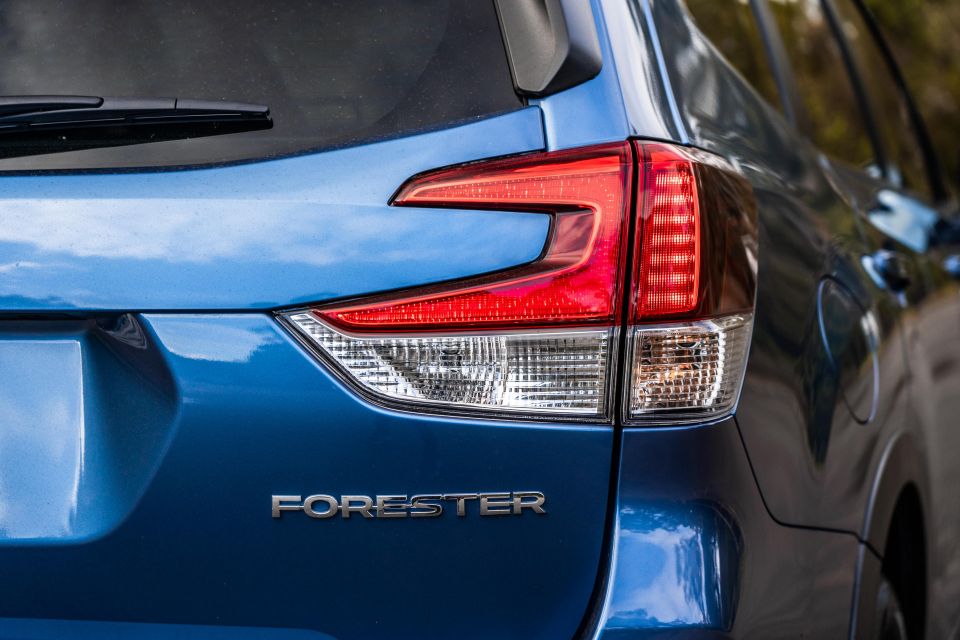
Click the images for the full gallery
Where expert car reviews meet expert car buying – CarExpert gives you trusted advice, personalised service and real savings on your next new car.
Scott Collie is an automotive journalist based in Melbourne, Australia. Scott studied journalism at RMIT University and, after a lifelong obsession with everything automotive, started covering the car industry shortly afterwards. He has a passion for travel, and is an avid Melbourne Demons supporter.


Anthony Crawford
6 Days Ago


Matt Campbell
5 Days Ago


James Wong
4 Days Ago


Max Davies
2 Days Ago


Josh Nevett
1 Day Ago


Josh Nevett
20 Hours Ago